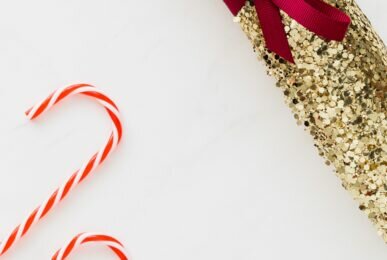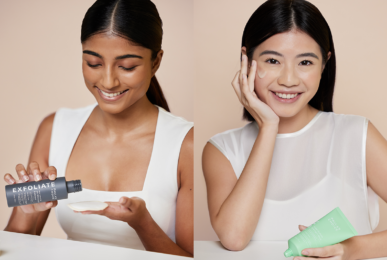How time flies – It has been a year with Ezra (a year of being a Mother!) and how I have enjoyed every second of it. Even the rough moments – because I know they are fleeting and the sad reality is my child will never need me as much when he grows older – so for now, it’s plenty of cuddles and kisses while he still lets me have them.
As I reflect on the year, and on my personal journey through parenthood, I have made a few realisations which might be helpful to new parents out there. For instance, things I probably shouldn’t have bought at the height of my pre-partum enthusiasm, getting the right advice and treatment for breastfeeding and the woes that come with it, seeking additional help to care for your children etc.
I am no parenting expert – don’t get me started on the whole playgroup/ Montessori education, and I mean it, I haven’t even started – but here are some things I wish someone told me before Ezra came along.
Nursery Prep: Dos and Don’ts
Okay, I was the overeager mom that prepped the nursery way in advance. I bought bedside cots, actual cots, mosquito nets for cots, loungers, S-shaped long and bulky nursing pillows, U-shaped nursing pillows, you name it. I gave most of it away to my fellow moms before Ezra turned 10 months old. If I could turn back time, I would just get a regular cot, the Snuggle Me lounger, and the doomoo Nursing Pillow.
I fear my son may have more clothes than Imran and I combined. Too many onesies, too many mittens, too many swaddles and too many socks! My advice is to not purchase any “NB” sized items, start with the 0-3m sizes. Get 5 sets of long-sleeved pajamas, 5 short-sleeved onesies, 3 sleeveless onesies (if your place is warm), 5 pairs of mittens, 5 pairs of socks, and 3 swaddles. Enough to get you through the first 3 months because you will be doing the laundry so often.
At the end of the day, what I’m trying to say is, calm that eager beaver down! Play it safe, because you will more or less have your go-to items by the time your baby turns 3 months, and everything else will be secondary. Places like Pupsik have next-day delivery, and you can always trust Motherswork or Mothercare to have everything you need.
Breastfeeding
As I approached my last few weeks of pregnancy, I did not worry much about the labour and recovery process, but it was the anticipation of breastfeeding and its “struggles” that made me anxious. I heard many various opinions from friends: that it would be painful for the first few weeks, that it was an emotional and physical struggle with milk supply – either oversupply or undersupply – and that it could be so tiring and tedious.
The first few days was definitely a flurry – learning how to get Ezra to latch, dealing with engorgement by listening to my confinement nanny/ hiring a lactation masseuse/ seeing a lactation consultant/ undergoing jamu massage, etc. There were so many people giving me advice (I haven’t thrown in advice from my mother-in-law and friends) and it seemed so overwhelming – I remember crying in the middle of my lactation massage and telling Imran “It’s so painful and I don’t know what to do!” Thankfully my husband has always been the calm and steady one. We consulted Dr Mythili Pandi – a certified lactation consultant and family GP – and stuck to her advice and her advice only (you and your husband should work as a team, have a game plan, and stick to it, no one else can interfere!). As my issue was with engorgement and oversupply, Dr Mythili’s technique was to get me to only latch one breast per feed, so my body knows it should regulate and replenish the supply of one boob only once every 5-6 hours. Of course, this method may or may not work for you, and I suggest you speak to your preferred lactation consultant.
What I will say is this to moms-to-be: it will be a struggle at first because it’s a whole new experience! Stick to what you and your body knows best, get advice if needed (and stick to one method at a time!), and you will get the hang of it after a few weeks. There IS light at the end of the breastfeeding tunnel!
Caring For Baby
Looking back, one of the things I wish I did during the first month of Ezra’s arrival, was to let go. I remember micro-managing and being very territorial (especially when family members were around). I also wanted to be the mother that could do anything, and resisted asking for help as much as I could.
I needed to get back to shoots and work after a month, and I quickly realised if I wanted to work and juggle motherhood, I cannot control everything. I need to accept that family members have the best of intentions and if it means having them take care of Ezra their way – so be it. I can guide them, and show (rather than tell) them how I like things done, and also lead by example.
Take Baby-Led Weaning (BLW) for example: Our parents and elder relatives are not familiar with the concept of BLW, so I have to be the one to show them how BLW is done. I also need to assure them that it is okay if babies have a gag reflex, and it trains them to consume food better. If I’m not around to prepare meals and if our family’s helper only knows how to cook porridge for Ezra, I’m cool with that too. I can probably make up for Ezra’s BLW training over the weekend, or in the mornings when I’m in charge of breakfast for Ezra!
So, let go and be willing to ask for help!
Cord Blood Banking and Cord Lining Banking
One thing I prepared for pre-partum, and to which I have no regrets – is cord blood and cord lining banking. When I first heard about cord blood and cord lining banking from my friends, I had no idea what it meant. It is not mandatory to store your baby’s cord blood and cord lining, but it is a consideration you and your partner can make together! I did ask my Gynae if it was compulsory for us to save Ezra’s cord blood and cord lining, and her answer was “It’s a decision up to you and your husband, there’s no harm in banking, just let me know in your birth plan!”
Some friends opted to go for Cordlife, and I did my own research too. If you are considering storing your baby’s cord blood and cord lining stem cells, then read on!
If you are unsure what cord blood and cord lining banking is, it means saving the stem cells derived from your baby’s umbilical cord blood and cord lining for future medical use. Umbilical cord stem cells are lifesaving in nature as they are used as mainstream treatments to treat over 80 conditions such as leukaemia, lymphoma, thalassemia and many more. There has also been incredible progress in using umbilical cord stem cells to treat incurable conditions such as autism, cerebral palsy and more. Umbilical cord stem cells are a 100% match to your baby, and can even be used for his/her siblings!
I spoke to Tess Goo from Cordlife Singapore and asked if she could answer some more important questions first time parents would have.
Andrea: Hi Tess! How do we go about collecting the baby’s cord blood and cord lining?
Tess: After your baby is born, the umbilical cord is clamped and cut. That is when your caregiver will insert a needle into the umbilical vein to collect the remaining blood (if cord blood isn’t collected, it’s generally discarded as medical waste).
As a dual-accredited family cord blood bank that has received certifications from AABB and FACT, Cordlife adheres to very stringent protocols set out by these independent governing bodies.
Hence, all of Cordlife’s consumables are stored in the respective maternity hospitals in a temperature-controlled environment. Cordlife’s heparin-free collection bags are sterile and simple for your doctor to use. If you have also decided to store your baby’s cord lining, a segment of the umbilical cord will be collected and stored in a sterile container provided in your Cordlife Umbilical Cord Lining Collection Kit.
After you have notified us of your delivery and reviewed the kit’s contents and pre-printed labels, a medical courier will pick up the collection kit from the hospital and deliver it to Cordlife’s processing and storage laboratory.
Whether you have a vaginal birth or a C-section, the process of collecting your baby’s stem cells is safe, painless, and non-disruptive to you, your baby, or your birth plan.
Andrea: How are the cord blood stem cells stored and how long can they be stored for?
Tess: It will be stored in a vacuum insulated cryogenic storage tank that is designed to remain at the optimal temperature of -135°C. We place it at this temperature as scientists believe that cord blood which has been processed according to international standards, and stored at cryogenic temperatures of below -135°C, can be stored indefinitely and still remain viable.
The cryogenic storage tanks are designed to remain at optimal temperature for cell storage over long periods and are monitored 24 hours a day, 365 days a year. The Cordlife laboratory is also equipped with multiple backup systems to ensure continuous operation (undisrupted processing). Ultimately, Cordlife is committed to safeguard your baby’s cord blood unit under the best storage conditions in the most secure and safest place.
Andrea: If I stored my firstborn’s cord blood, do I have to store the cord blood for my subsequent children?
Tess: It is recommended as storing all your children’s cord blood would increase the chances of siblings covering each other for possible transplants or other therapies. Storing for each child also provides the option of using their own cord blood for autologous transplants as it is always a 100% match. The second highest chance of a match comes from siblings.
Andrea: How much is this going to cost?
Tess: There are different plans parents can choose from, with the added benefit of choosing an installment plan to cater to varied financial needs. Parents can even choose to pay to store their baby’s cord blood and cord lining stem cells using their baby’s CDA Account, should they be eligible for one.
Andrea: What are some other benefits other than transplants and treatment for severe diseases?
Tess: One other benefit of storing cord blood stem cells is the Endless Potential of Cord Blood Stem Cells. There are many ongoing clinical trials and studies using cord blood stem cells, which have given hope to families faced with conditions that currently have no known cure. By opting to store your baby’s cord blood with a trusted family cord blood bank, it gives you and your family a peace of mind knowing that there is the potential to unlock more medical options for your family in the future.
It can also be a Ready Source of Lifesaving Stem Cells for Your Family. By choosing to store your baby’s cord blood, you ensure that this important medical resource for your family will be within reach should a time-critical situation ever arise. Unlike bone marrow which requires a perfect match between donor and patient, the probability of finding a match among family members using cord blood stem cells is higher. By storing the cord blood from each child, parents can increase the chance of locating a match within the family. Furthermore, there is a 95% survival rate for transplants using related cord blood as compared to 61% for unrelated cord blood.
—
I hope you found this entry useful! If you’re a first-time parent, you will be an awesome parent – the learning curve is steep but slow and steady does it!
Love,
Drea















